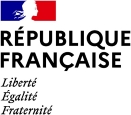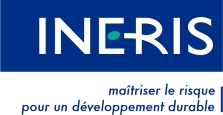REACH Regulation
Nonylphenols and nonylphenol ethoxylates are included in the Annex XVII of the REACH Regulation.
This regulation stipulates that nonylphenols and their ethoxylates shall not be placed on the market, or used, as substances or in mixtures in concentrations equal to or greater than 0,1 % by weight for the following purposes:
- industrial and institutional cleaning except:
* controlled closed dry cleaning systems where the washing liquid is recycled or incinerated,
* cleaning systems with special treatment where the washing liquid is recycled or incinerated.
- domestic cleaning;
- textiles and leather processing except:
* processing with no release into waste water,
* systems with special treatment where the process water is pre-treated to remove the organic fraction completely prior to biological waste water treatment (degreasing of sheepskin);
- emulsifier in agricultural teat dips;
- metal working except: uses in controlled closed systems where the washing liquid is recycled or incinerated;
- manufacturing of pulp and paper;
- cosmetic products;
- other personal care products except:
- spermicides;
- co-formulants in pesticides and biocides. However national authorisations for pesticides or biocidal products containing nonylphenol ethoxylates as co-formulant, granted before 17 July 2003, shall not be affected by this restriction until their date of expiry.
Since 3rd February 2021, a more restrictive regulation applies to nonylphenol ethoxylates present in textile articles which can reasonably be expected to be washed in water during their normal lifecycle : the European Commission Regulation (EU) 2016/26 of 13 January 2016 sets the maximum concentration of nonylphenol ethoxylates at 0.01% by weight of an article (or each part of a textile article). This restriction shall not apply to the placing on the market of second-hand textile articles or of new textile articles produced, without the use of NPE, exclusively from recycled textiles. “Textile article” means any unfinished, semi-finished or finished product which is composed of at least 80 % textile fibres by weight, or any other product that contains a part which is composed of at least 80 % textile fibres by weight, including products such as clothing, accessories, interior textiles, fibres, yarn, fabrics and knitted panels.
4-nonylphenol ethoxylated, branched and linear, 4-nonylphenol, branched and linear, 4-(1,1,3,3-tetramethylbutyl)phenol, ethoxylated and 4-(1,1,3,3-tetramethylbutyl)phenol have been identified by the Member State Committee as SVHC (Substance of Very High Concern) because of their endocrine disrupting properties for the environment.
4-nonylphenol, branched and linear, ethoxylated and 4-(1,1,3,3-tetramethylbutyl)phenol, ethoxylated are included in the "Authorisation List" of the Annex XIV of REACH. This annex lists substances for which authorization is necessary in order to be able to place them on the market within the European Union (concerning uses covered by the REACH Regulation).
On 09 November 2021, the European Commission has granted eleven authorizations for industrial and medical uses of 4-(1,1,3,3-tetramethylbutyl)phenol, ethoxylated (4-tert-OPnEO) : siliconisation of glass containers, viral inactivation of biological proteins in the manufacture of biopharmaceutical substances... The review dates for these authorisations range, depending on the uses concerned, from 04 January 2026 to 04 January 2033.
Water Framework Directive (WFD)
Octylphenols and nonylphenols are on the list of priority substances of the Water Framework Directive. The Directive stipulates that discharges, emissions and losses of these substances must stop no later than 2021.
Directive on the quality of water intended for human consumption
Nonylphenol is included in the list of substances to be monitored in drinking water due to its endocrine disrupting properties and the risk it poses to human health (European Directive 2020/2184). According to the decision approved by the European Commission on 19 January 2022, if nonylphenol is detected at concentrations above the guideline value of 300 ng/l, the State shall ensure that certain measures are taken, for example: appropriate prevention, mitigation or monitoring measures in catchment areas for abstraction points, measures to require water suppliers to check whether treatment is adequate to achieve the guideline value or, if necessary, to improve treatment...
The deadline for transposition of the directive is 12 January 2023.
European Sector Directives
European Union prohibited Nonylphenols in cosmetics via the European Regulation n°1223/2009.
Neither nonylphenols, nor octylphénols, nor their ethoxylates are on the list of monomers, other starting substances, macromolecules obtained from microbial fermentation, additives and polymer production aids authorized by the Commission Regulation (EU) N°10/2011 of 14 January 2011 relating to the plastic materials and articles intended to come into contact with food.
NB: Octylphenols are present as impurities in concentrated nonylphenol solutions. Restrictions on the use of nonylphenols and their ethoxylates thus indirectly affect octylphenols.

